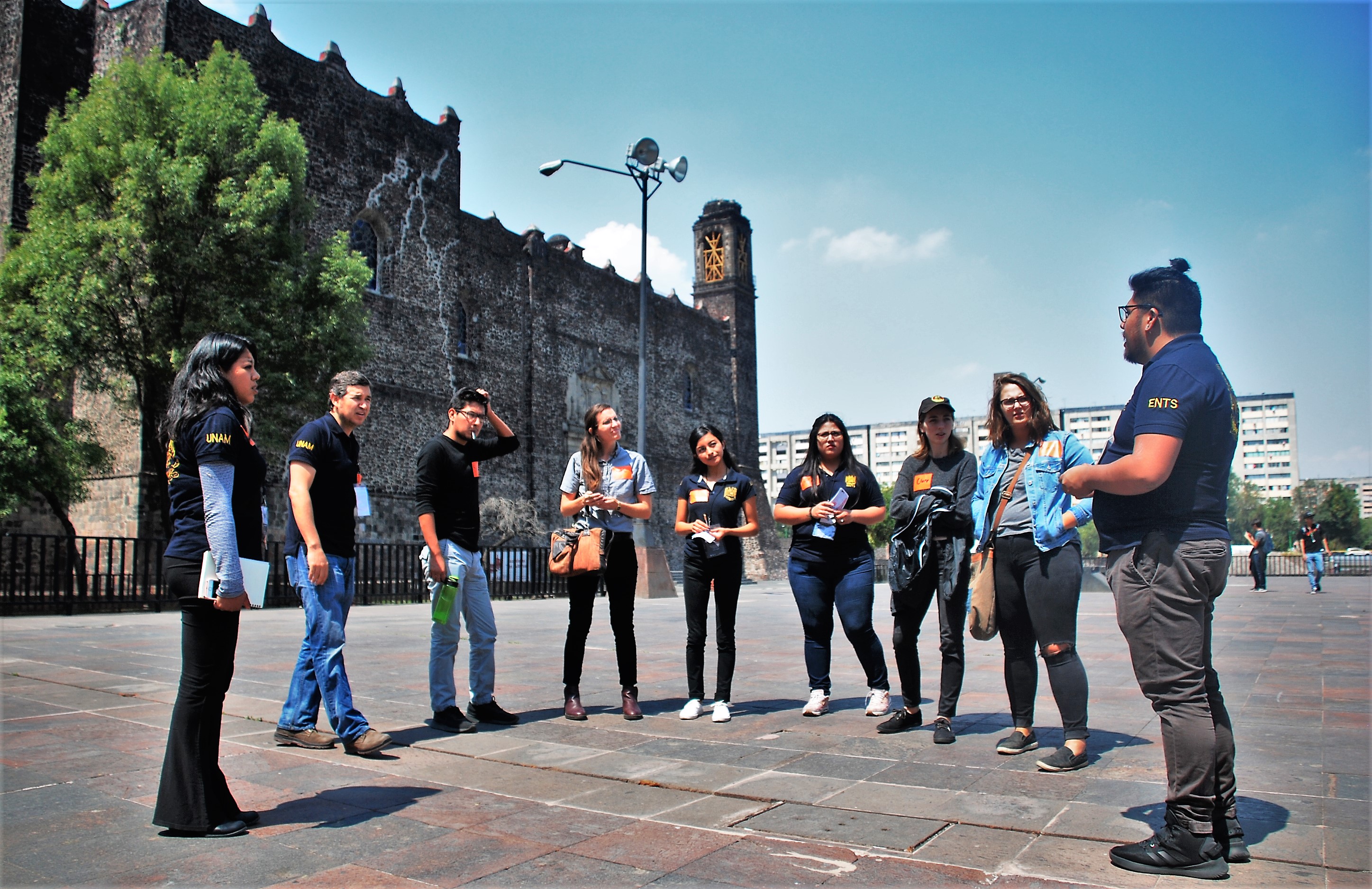Last week, the social work students were invited to spend a week at the Escuela Nacional de Trabajo Social, one of the schools that make up UNAM, the National Autonomous University of Mexico. Our week was busy as we participated in social work classes, shadowed a few practicum sites, listened to a few guest speakers, and got to learn more about how universities in Mexico are different than the ones in the United States.
We were fortunate enough to be able to visit a few of the practicum sites that UNAM students have been placed at, and one of the ones we visited was Unidad Habitacional Nonoalco Tlatelolco. One significance of this neighborhood is that it involves the location of the UNAM student massacre that occurred in 1968. The area paid great respect to the victims of the massacre as well as honoring the movement and sacrifices these students made for change within their government. I found this to be a striking difference between the U.S and Mexico. Mexico wants to honor student movements and make sure their people never forget their sacrifices, but in the United States, student movements are often silenced with no effort to continue telling their story. For these students, this site is one of their first practicums and they focus on social work at the community level. For me, the fact that the students start their practice with community and then work their way to individuals was one of the most distinct differences between social work in the United States and Mexico. Mexico is a much more collectivist culture than the United States, so they put more value into community building than we do in the United States. While there are definite cultural differences between Mexico and the United States, after talking with the students of UNAM they expressed the same passion and feelings of the field that I have. I was able to see multiple benefits of this switched system and it left me wondering, is there a wrong way to teach social work?
UNAM is a school with around 300,000 students, so the campus is massive to accommodate all of the students. When students and a few staff members wanted to give us a tour of the university, we were only able to see a small part of the campus. However, just in this small part there were several beautiful murals and architecture each with a story of their own. For example, the students and I were able to hear the history behind the mural of the Central Library of UNAM, and how the art on the building incorporates aspects of the pre-colonial period, life during the Spanish colonization, and modern-day Mexico. After spending a week at the UNAM campus, I could tell how intertwined the school was with its country’s culture. I thought of how rare it is to see a university whose history is a large part of their identity, and how they want to continue sharing their stories as the university continues to grow in the future. UNAM is a beautiful school with a rich history, and I am appreciative of the students and staff that took time out of their schedules to make our experience memorable.




